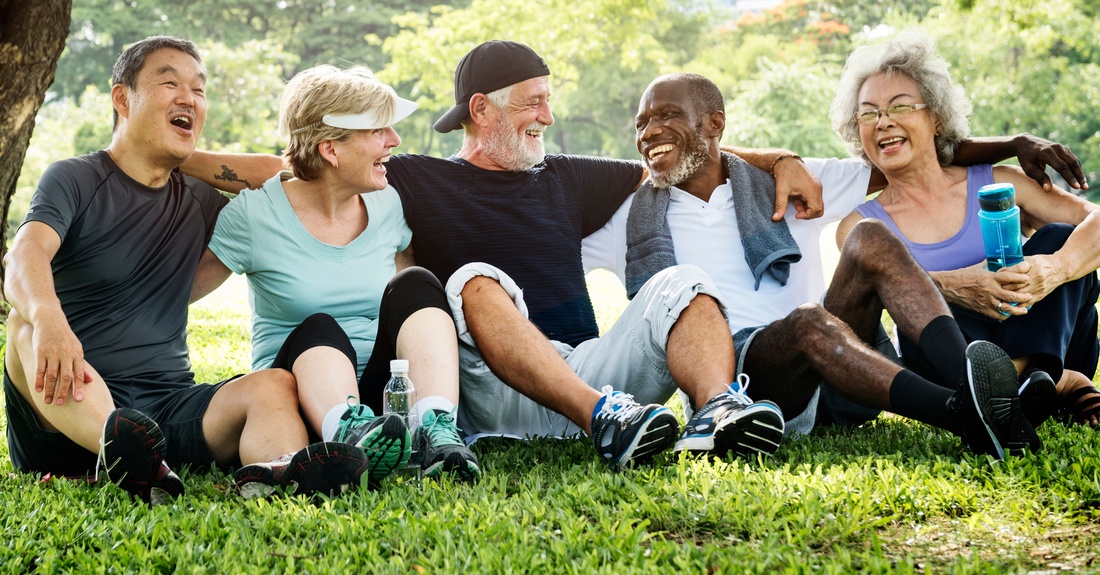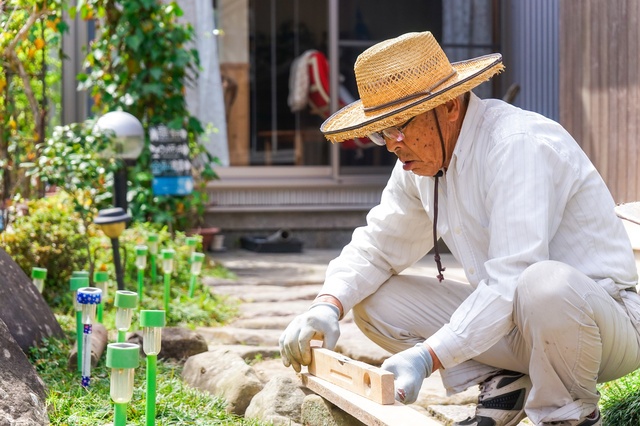Social wellness activities

When we think about social wellness, our individual well-being may first come to mind. How satisfied are we with our lives? Do the relationships we have bring us joy and contentment? What can we do better to improve our adult social well-being? Are we balancing our social wellness with activities that promote positive physical and emotional health?
Wellness can be defined as regular practices of activities, choices and lifestyles that guide us toward total well-being. This idea goes far beyond eating right and exercising. It’s also a very subjective concept: While certain activities and lifestyle choices may be just what you need to achieve healthy social wellness, your best friend may need much different options in order to achieve theirs.
In this article, we will examine social wellness activities that help us achieve happier, healthier and less-stressed lifestyles. You’ll see that some of the most effective activities involve interacting with others — because achieving total wellness means more than what we do by ourselves. Wellness activities are the collective steps we take each day to improve our social health.

What is good social wellness?
Good social wellness starts by having the desire and motivation to do several things each day to improve your overall social well-being. The good news is that as humans, we are already programmed to be social. We just need to find social health activities that we can turn into daily habits. Having positive relationships certainly plays an important part in this exercise; however, there is a lot more we can do to improve our social well-being.
Here are some social wellness examples that you may find helpful as you consider which activities appeal most to you:
Engage in volunteer work. Research tells us that volunteering helps build a support system based on common interests. A great way to strengthen existing relationships is to participate in a shared activity.
Take a class at a local community center. Similar to volunteering, signing up for a class (think cooking, writing, flower arranging or exercise classes as examples) can help you connect with people and build friendships.
Keep a journal. Maintaining a written log of your observations is a valuable tool in exploring your feelings. Journaling helps clear your mind while documenting things you do not want to forget.
Keep moving. You don’t have to sweat it out in a gym to enjoy the benefits of staying active. Movement in general is good for our bodies (and our minds) — but it’s up to us to prioritize fitness in our lives. Try moving 20–30 minutes per day and see how it helps your mood. Some ideas to start may include:
- Take a brisk walk during lunch.
- Choose to take the stairs instead of the elevator.
- Park in a spot that is toward the far end of the parking lot.
- Play fetch with your dog.
- Jump rope.
Eat well. Simply eating nutritious meals and snacks can fuel our mental and physical health. Try mixing up your diet to include more dark green leafy vegetables, nuts, seeds and legumes. Here are the top three foods to incorporate into a healthy mental diet:
- Complex carbohydrates like brown rice and starchy vegetables can give you energy. Quinoa, millet, beets and sweet potatoes have more nutritional value and will keep you satisfied longer.
- Lean proteins like chicken, meat and fish also lend energy that allows your body to think and react quickly. Other good sources of lean proteins include eggs, soybeans, nuts and seeds.
- Fatty acids are crucial for the proper function of your brain and nervous system. You can find them in fish, meat, eggs, nuts and flaxseeds.
Meditate. Quiet time with ourselves each day relieves stress and allows us to self-reflect privately in our own safe space. There are many health benefits of meditation, including:
- Better sleep
- Lower blood pressure
- Improved memory
- Increased attention span
- Less anxiety and depression.
Pause social media. Being on our phones and checking our social media accounts can eat up huge chunks of our day. It’s important not to let it negatively affect our mental health. Consider these ways to help manage social media usage:
- Set time limits for how long you want to be available on social media, then physically put your phone out of reach.
- Choose not to engage in disrespectful comments or arguments.
- Focus on improving yourself.
- Mute or unfollow people who are disturbing your overall social well-being.
Establish a healthy nighttime routine. Aim to get 7–9 hours of sleep every night. Protect your sleep time by turning off phone notifications and sticking to the time you go to bed each evening. A healthy nighttime routine sets us up for success the next day.
Commit to doing as many of these social health activities as you can to kick-start good social wellness.

What are examples of emotional health activities?
The World Health Organization was among the first group of researchers to define total wellness as being “a state of complete physical, mental and social well-being and not merely the absence of disease or infirmity.” This means that emotional health is a primary component in our overall wellness. While physical social health activities are important in our everyday lives, so are emotional health activities. Emotional self-care serves as a foundation for our ability to cope with stress and nurture positive relationships.
Here are some examples of social wellness activities that can improve our emotional health:
- Expressing gratitude. Start each day thinking about the things and people in your life that bring you joy. Write down your blessings. Also write down why you are grateful for someone else — and share it with them! Don’t assume they know how much they mean to you. A simple text could brighten their whole day. A handwritten letter is a more personal gesture that shows you took the time to truly thank them for being a positive influence in your life.
- Engaging in random acts of kindness. Similar to expressing gratitude, random acts of kindness can make a big difference in someone’s day. What’s particularly special about random acts of kindness is that you can give them to people you don’t know. We’ve all heard of the phrase “pay it forward,” and that’s exactly what random acts of kindness are all about. Whether you pick up someone’s tab in the drive-through or leave some flowers on a neighbor’s front porch, random acts of kindness promote optimism and happiness. Better yet — they’re contagious!
- Developing (and maintaining) high-quality relationships. We’ve already learned about the importance of growing our existing relationships and seeking out new connections to improve our adult social well-being. People who have a network of positive relationships are healthier both physically and mentally. They have a brighter outlook on life and can handle stress better than those with poor social wellness. It doesn’t matter how many high-quality relationships we have either; it’s the nature and character of our connections that make the difference in our overall well-being.

What are 5 examples of social health activities?
Because wellness is multidimensional and varies greatly depending on the choices each of us make, many experts divide the topic of wellness into different categories. All of them work together to achieve the same goal of finding a healthy balance in our lifestyles. The Global Wellness Institute, for example, suggests the following five dimensions of wellness, with examples of social health activities that can help support them.
Social — when we belong to a meaningful support system, it has a positive impact on our overall happiness. Some physical wellness examples to improve this piece of our wellness puzzle include:
- Staying connected with our friends. Game nights, potlucks or book clubs are fun ways to get people together.
- Checking in regularly with the people who are closest to you. Don’t let time get in the way of a quick call. Think about setting a recurring date on your calendar to remind you to reach out.
- Balancing time for yourself. It’s healthy to nurture your most meaningful connections, but remember to reserve time to be alone, too. This allows you to recharge your social batteries!
Financial — yes, financial self-care is another dimension of wellness. When we’re content with our current financial situation (and the forecast for the future), we worry less. Think about:
- Setting financial goals and celebrating progress. Creating a savings plan for an important milestone, such as an emergency fund or a vacation with friends, empowers us to feel more in control of our money.
- Setting a budget and sticking to it. This could be the most challenging part of financial wellness, but it is also the most important. Take an honest look at your income, and what you are spending it on, to get a true picture of where you stand financially. This will help position you for success.
Environmental — this dimension of wellness helps us establish pleasant settings that positively support our well-being. Some wellness activities for environmental self-care include:
- Rearranging our furniture or organizing a neglected space in our home.
- Getting outside. Even a short walk or a cup of coffee on the porch can make a difference in your mood. Try to spend at least 20–30 minutes outside every day.
- Taking a trip. This doesn’t have to be a full-blown vacation; rather, consider taking a day trip to a state park or a nearby attraction you’ve been wanting to see. The point is to change your scenery and explore!
Physical — besides just managing health conditions or illness, it’s important to give your body what it needs to thrive.
- Exercise at least three times a week. Again, this doesn’t have to involve high-intensity workouts. Simply moving our bodies (walking is all it takes!) makes a difference in our physical wellness.
- Get enough sleep. Research shows that people who get less than seven hours of sleep each night feel more stressed throughout the day. Poor sleep habits also contribute to mood disorders.
- Track your progress. Consider using a fitness monitor that can show you how you’re doing with movement, sleep and even your diet. This will help you see what you’re doing well and areas where you can improve.
Intellectual — finding new ways to stimulate our brains is how we invest in our intellectual wellness. By learning a new skill or expanding our knowledge in a certain topic, we can boost our brainpower and increase our cognitive capacity. Consider these wellness activities for mental health:
- This is a shared habit of the most successful people in the world. You don’t have to read War and Peace for your brain to benefit from this pastime. Pick up a magazine, a devotional or any paperback of your choice and just make time to read it. Your mind will thank you.
- Learn a language. Studying a topic that’s unfamiliar to us can encourage personal growth and allows us to be more well-rounded. Our brains crave new experiences, and curiosity drives our learning.
- Play brain games. Problem-solving is one of the best workouts for the mind. Dust off that Rubik’s Cube or try filling out a crossword puzzle or Sudoku challenge. The goal is to keep our brains busy, which in turn keeps us satisfied and happy.
RECAP: What activities support emotional well-being?
In this article, we discussed social wellness activities and how they support emotional well-being. We learned that wellness is a state of actively living a lifestyle that helps achieve good health. Choosing even a few of the emotional well-being activities explored in this article can help to improve your health and create satisfying relationships. Remember to engage in activities that you will enjoy doing long term so that you can benefit from good social wellness.
Hello4Health, a new initiative from Allina Health, helps people connect with one another to develop more and stronger social connections, improving both mental and physical health.
Learn more about adult social well-being and connectedness by checking out Hello4Health’s online resources and following us on social media.
